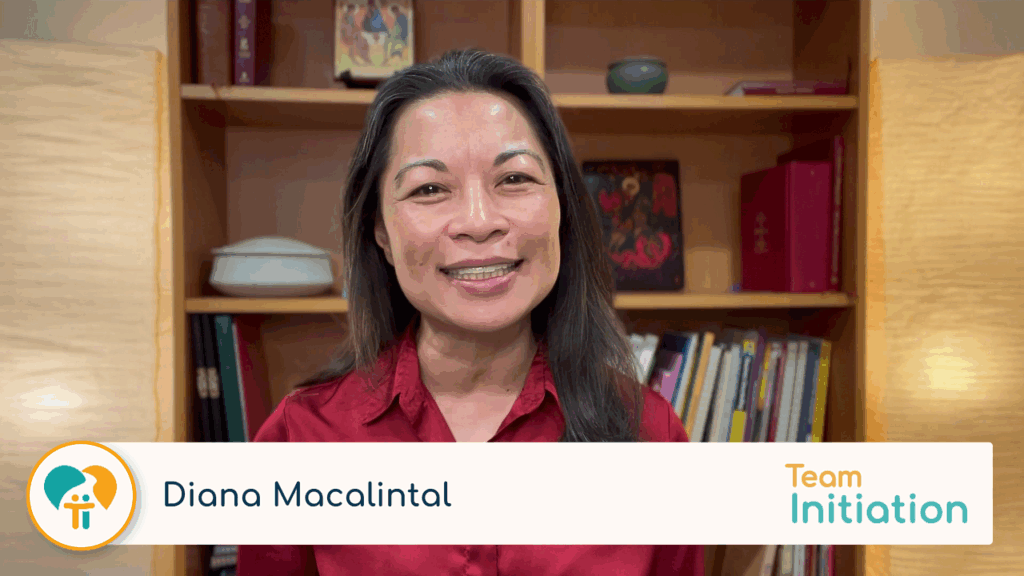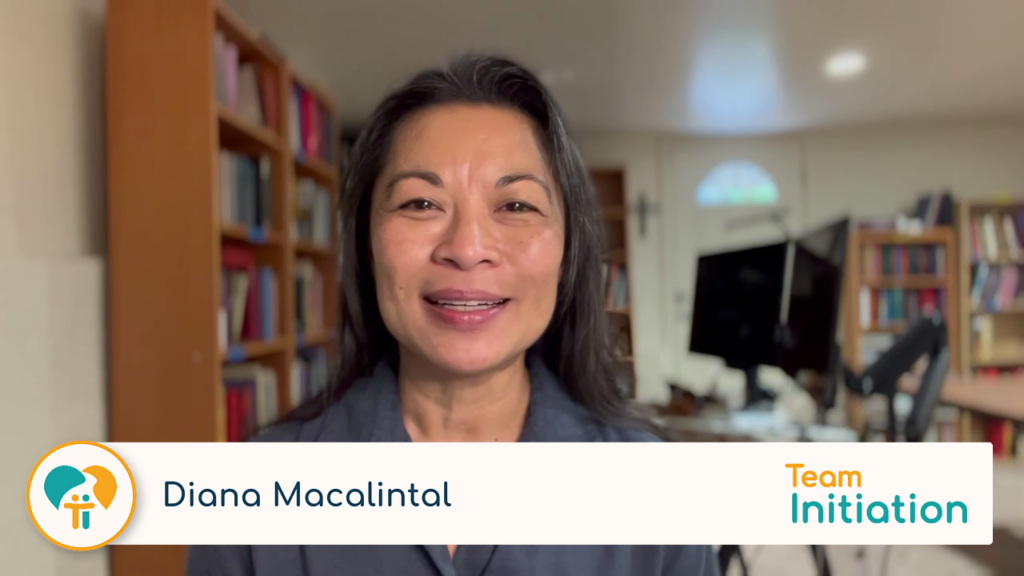
Imagine this announcement in your parish. “Next Sunday we are going to celebrate the Rite of Acceptance with several catechumens.” Now in your mind’s eye, look out at the assembly. Is there a collective eye-roll? Or are they whipping out their Blackberries to cancel golf games and trips to see Grandma so they can be present at the liturgy?
The difference between a catechumenal rite that makes the primary minister—the baptized faithful—want to flee and one that serves as a conversion experience for the whole parish is rehearsal. The rites are powerful. You know that. But if you don’t work at doing them well, the assembly will only find them burdensome.
There are two steps to the rehearsal: Your own preparation and the preparation of the other ministers. Let’s start with you.
Getting ready to rehearse
I once asked a gathering of RCIA teams how many of them had read the Rite of Acceptance. One hand went up. It seems obvious to say, but you have to read the rite in order to do it well. And there is a method to reading the rite. A rite is an event, not just words on paper. So you need to read it the way you would read a play if you were a director. As the director, the first thing you need to know is the purpose of the rite.
That’s easy, right? Well, yes and no. If I asked you the purpose of the Rite of Acceptance, what would you say? And how would you know for sure that you are right? Maybe it’s not as easy as you first thought. But finding the answers to such questions—for the Rite of Acceptance or any rite of the church—is easy. Every rite has a pastoral introduction. So your first step is to read the pastoral introduction to the rite. From that you will learn the theological intent of the church and how the church intends for the rite to be celebrated.
And don’t just read it. Underline it. Make notes in the margin. Imagine how you are going to bring this rite to life in the midst of your assembly. Pay particular attention to what the introduction identifies as the climax or most important part of the rite. You want to pace the celebration of the rite in such a way that the climax feels like a climax.
Next read the rite itself. The rite, like a play, will have both “lines” and “stage directions.” Or in church language, “prayers” and “rubrics.” You need to read both. Imagine who is saying the lines. Imagine how you are going to move people and things around according to the rubrics. When there is a dialogue, what direction will you give the “actors” to make the dialogue sound authentic and not rehearsed? Underline things that seem important and make notes for yourself.
Once you have done all that, go over to the church and walk around the “stage.” And don’t limit the stage to only the area up near the altar. The Rite of Acceptance, for example, begins outside the worship space. The staging of the ritual can occur out in front of the church, around the font, in the midst of the assembly, and in the altar area, all depending on the rite and what the point of the rite is. Start at the beginning of the rite and physically walk through it, reading the prayers and dialogues out loud. Make notes of “props” you are going to need and other “actors” the rite might not list. For example, will you need a cross? The lectionary? Someone to open the doors for processions? Someone to hold the book for the presider?
As you walk through the rite, always keep the assembly in mind. How can you enhance their participation? Here are just a few questions to consider:
- Can the assembly see and hear? What would help them see and hear better?
- Are the lead ins for their responses clear in the rite? How can you improve them?
- Are there gestures or postures that you can emphasize for the sake of assembly participation?
- At each point in the rite, what would help the assembly engage?
- At the high point of the rite, what will create a sense of climax for the assembly?
A rite is an event, not just words on paper. So you need to read it the way you would read a play if you were a director. As the director, the first thing you need to know is the purpose of the rite.
Preparing a rehearsal script
Now head back to your desk with all your notes and thoughts. Read through the rite from beginning to end, adding notes as you think of them. Then, mark up the ritual book the presider will be using, indicating which prayers will be used, where he will be standing, when he moves, and any other directions you want to give him. It’s best to add your marks on PostIt notes that can be replaced next time you celebrate the rite. Or you might want to create a script from scratch on your word processor.
Rehearsing with others
These are the people you need at the rehearsal:
- Sponsors or godparents
- Presider
These are the people who ought to be there if at all possible:
- Musician
- Catechist or team leader
- Cross bearer (if needed in the rite)
- Acolyte (an adult if possible)
- Hospitality ministers
- Lectors (could be scheduled for a separate rehearsal)
Notice who is not on the list? The candidates for the rite (catechumens or those preparing for full initiation) do not participate in the rehearsals.
It is up to the sponsors or godparents to be well prepared and know how to guide the candidates through the rite. Their care for the candidates in the rite is symbolic of their commitment. The candidates will be nervous enough as it is. They shouldn’t have to worry about where they are supposed to stand or when they are supposed to say something. The sponsors or godparents have to provide a strong, confident presence that candidates trust.
So, once you have everyone assembled in the church for the rehearsal, you walk through the entire rite with them just as you did with yourself. Always begin the rehearsal with a reminder to the sponsors or godparents to maintain physical contact with the candidate at all times. Usually, this will be a hand on a shoulder or something similar. Also, give the sponsors or godparents clear directions about where to meet their candidate before the liturgy and where to place them. Will you begin outside? Which pews do you want them to sit in?
As you walk through the rite, have every sponsor practice every movement and gesture of the rite. Have them speak their parts out loud, and have them do it again until they sound strong and confident.
If your presider is experienced, you don’t necessarily need to have him say every line and make every gesture. However, if he has never celebrated the rite before, you will want him to be as thorough as the sponsors.
If the musician is present, she can help by providing musical cues as necessary throughout the rehearsal. Lectors do not need to be present at the walkthrough, but schedule a time to practice their readings with them.
Preparing the assembly
The final step in your rehearsal process is to prepare the assembly. It is important that you do not “explain” the rite to them. It’s not that you are trying to keep them in the dark. It’s just that a lengthy description of the Rite of Acceptance, for example, will either bore them or baffle them. Weeks before the celebration, simply announce, either verbally or in the bulletin, that the parish will be welcoming several new people into a process that will eventually lead to their baptism. Ask the parish to pray for them, and ask them to make an extra effort to be present to welcome them to the community on the date scheduled.
On the day of the rite, remind the assembly what the rite is that will be celebrated and give them a one-sentence summary of the rite’s purpose. Then celebrate the rite in such a way that it is crystal clear what the assembly’s role is and what their responses are. Musical cues can be a big help with much of this. Also, planning the rite in such a way that the assembly can see and hear will also be a big help.
Finally, at the end of Mass, during the announcements, give the assembly a brief (one minute, tops) summary of what they did. If you have enough team members to support it, invite the assembly to a coffee and doughnuts session after Mass to discuss the rite and the initiation process.
Review your steps
Just to review, here’s the secret recipe for successful ritual:
- Read the rite
- (Keep the assembly in mind)
- Locate the climax
- Make notes
- Walk through the rite yourself
- (Keep the assembly in mind)
- Make notes
- Prepare a script
- Rehearse
- Sponsors or godparents
- Presider
- Musician
- Catechist or team leader
- Cross bearer (if needed in the rite)
- Acolyte (an adult if possible)
- Hospitality ministers
- Lectors
- (Not the candidates)
- Prepare the assembly
- Click here for some ideas on how to prepare the assembly with bulletin inserts.
















